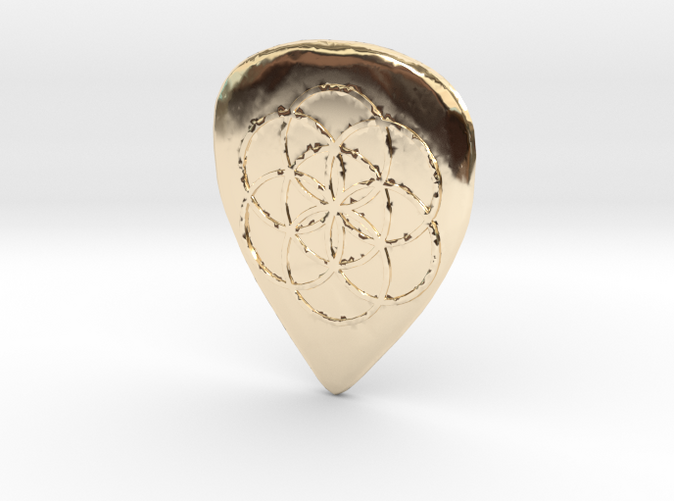-
-
Search our Marketplace
-
- Software
- Manufacturing
- Industries
-
Materials
Not sure what material to choose? View 3D Materials Guide
- ABOUT Marketplace
- Get a Quote
- Sign In
-
0You haven't added any 3D printed products yet.
Musicians have used plectrums to play stringed instruments for thousands of years.[1] Feather quills were likely the first standardized plectra and became widely used until the late 19th century. At that point, the shift towards what became the superior plectrum material took place; the outer shell casing of an Atlantic hawksbill sea turtle, which would colloquially be referred to as tortoiseshell.[1] Other alternatives had come and gone, but tortoiseshell provided the best combination of tonal sound and physical flexibility for plucking a taut string.[2] Prior to the 1920s most guitar players used thumb and finger picks (used for the banjo or mandolin) when looking for something to play their guitar with, but with the rise of musician Nick Lucas, the use of a flat “plectrum style guitar pick” became popular.[3]
There have been many innovations in the design of the guitar pick. Most of these were born out of the issue of guitar picks slipping and flying out of the hand of the player.[4] In 1896, a Cincinnati man (Frederick Wahl) affixed 2 rubber disks to either side of a mandolin pick, which made it the first popular solution to the problem.[5] Over the next two decades more innovations were made, such as corrugating the rounded surface of the pick or drilling a hole through the center to fit the pad of a player’s thumb.[6] A more notable improvement was attaching cork to the wide part of the pick, a solution first patented by Richard Carpenter and Thomas Towner of Oakland in 1917.[6] Some of these new designs made picks undesirably expensive. Eventually, pickers realized that all they needed was something to sink their fingerprints into so the pick wouldn't slip, such as a high relief imprinted logo. Celluloid was a material on which this could easily be done.[7]
Tony D’Andrea was the one of the first people to use celluloid to produce and sell guitar picks. In 1902 he came upon a sidewalk sale offering some sheets of tortoise shell colored cellulose nitrate plastic and dies, and eventually he would discover that the small pieces of celluloid he punched out with the dies were ideal for picking stringed instruments.[8]From the 1920s through the 1950s, D’Andrea Manufacturing would dominate the world’s international pick market, providing to major businesses such as Gibson, Fender, andMartin.[9] One of the main reasons celluloid was so popular as guitar pick material was that it very closely imitated the sound and flexibility of a tortoise shell guitar pick. The practice of using Hawksbill turtles for their shells would become illegal in 1973 as a provision of the Convention of International Trade in Endangered Species of Wild Fauna and Flora (CITES), forcing musicians to find something else to pick with.[2]
Musicians had been partial to shell picks, and when D’Andrea provided an alternative, D’Andrea Manufacturing became very successful and gained renown as the guitar pick of choice through the 1960s.[10] Celluloid provided a good alternative in many ways. Tortoise shell was rare, expensive, and had a tendency to break. Celluloid was made fromcellulose, one of the most abundant raw materials in the world, and nitrocellulose combined with camphor under heat and pressure produced celluloid. Though originally meant as a replacement for ivory billiard balls, celluloid began being used for many things for its flexibility, durability, and relative inexpensiveness, making it a natural candidate as a material for guitar picks.[11] Later, other materials, such as nylon and less popularly wood, glass, or metal would become popular for making guitar picks for their increased grip, flexibility, or tonal qualities.[12]
